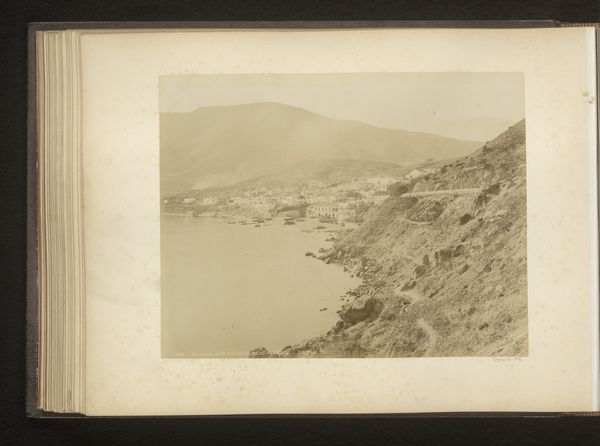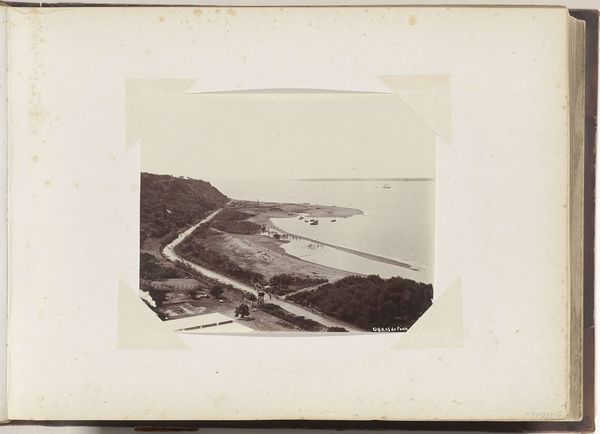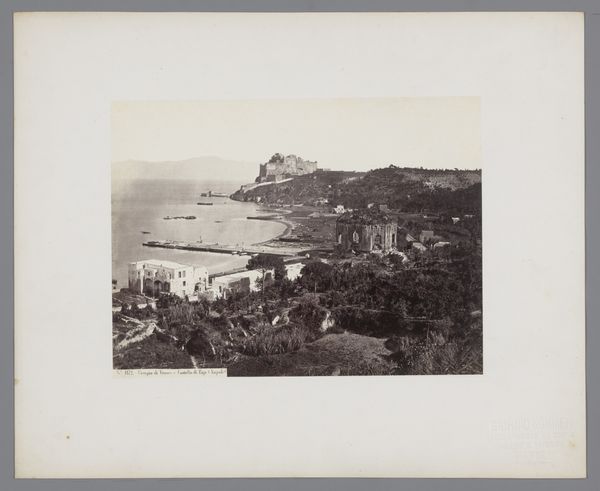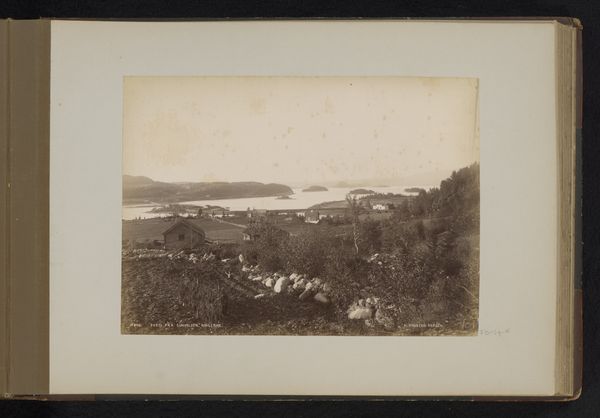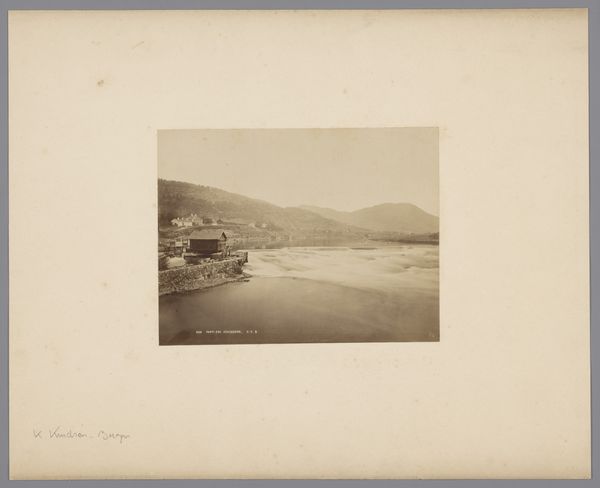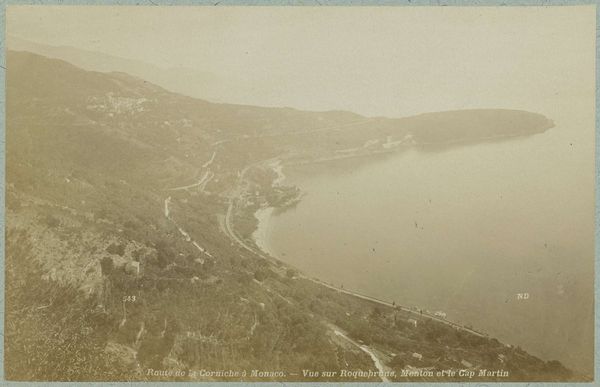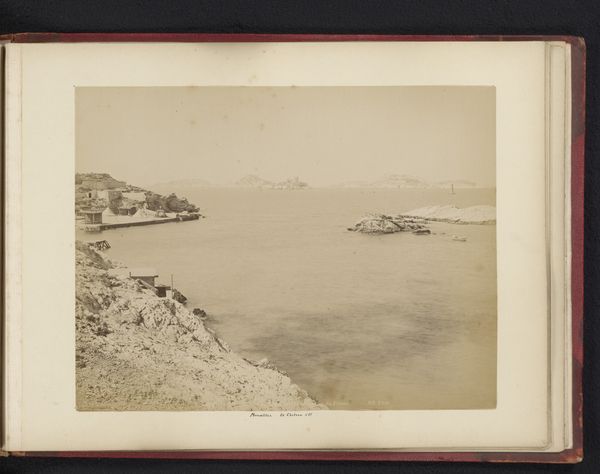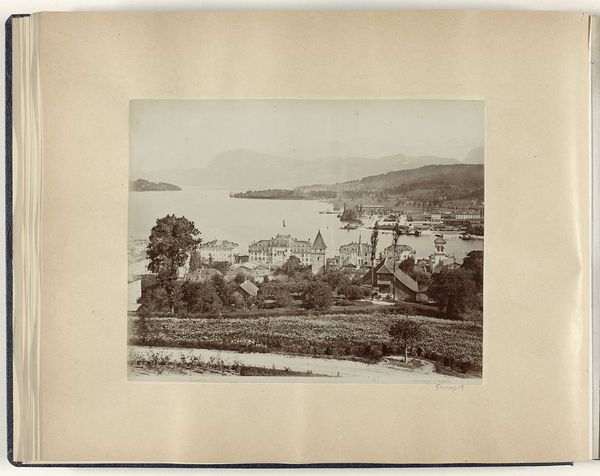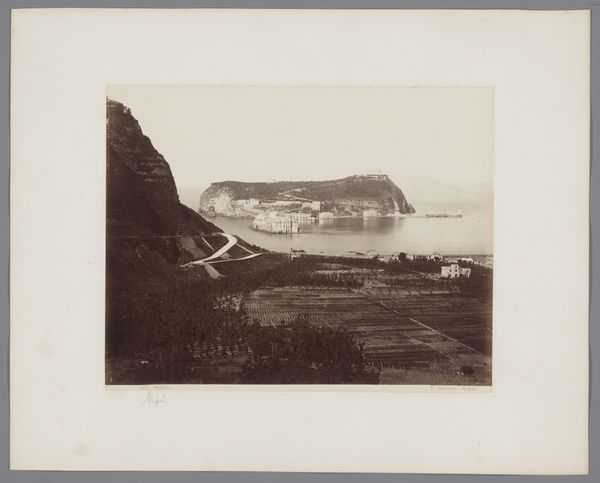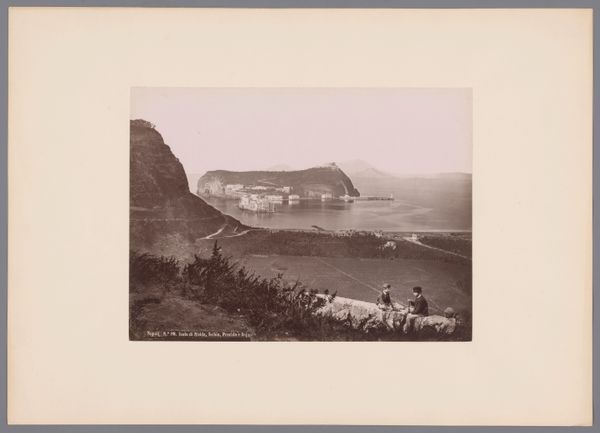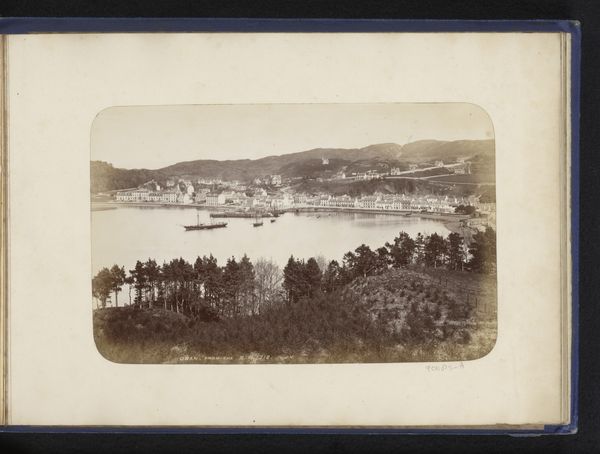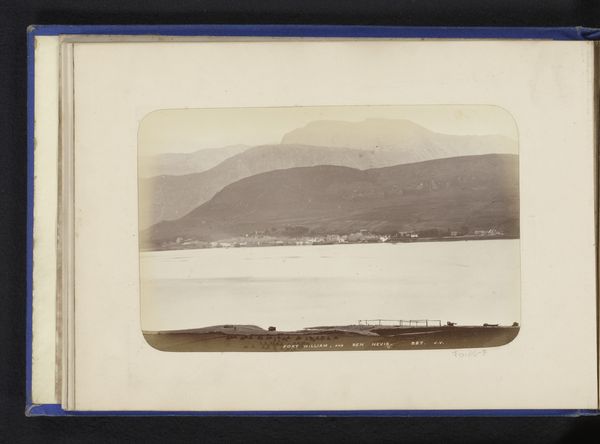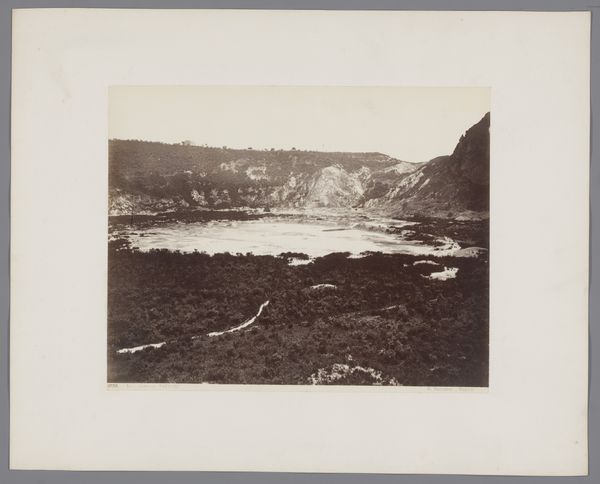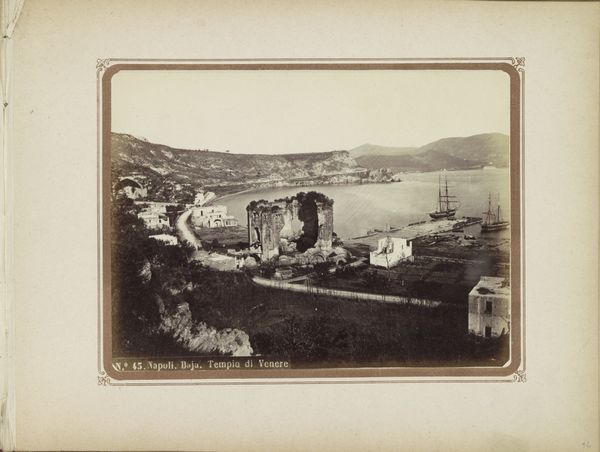
plein-air, photography, gelatin-silver-print
#
natural tone
#
plein-air
#
landscape
#
photography
#
gelatin-silver-print
#
cityscape
Dimensions: height 138 mm, width 176 mm
Copyright: Rijks Museum: Open Domain
Curator: This gelatin-silver print, titled "Gezicht op La Guaira in Venezuela", presents a panoramic cityscape from before 1887, crafted by Jacobus Rudolphus Neervoort van de Poll. Editor: Immediately striking. It's got this almost monotone scale with very light, muted natural tones... A gentle rise from dark foliage to the bright horizon, right? I find it oddly soothing, with the regimented cacti offering a textured foreground. Curator: Indeed, the ordered yet wild cacti draw your eye into the controlled layout of the city. It's also quite possible this work was part of an illustrated publication, if that little label in the top-right corner is any indication. In those days, landscape photography had a huge effect in portraying an enlightened vision for places people may not have yet seen themselves, allowing for social connection on a broad scale. Editor: And thinking about the form: That wide format really helps showcase the linear arrangement of La Guaira—emphasizing that thin strip of civilization nestled between the mountain and the sea. Did the artist use this angle and horizon line on purpose, to make sure viewers’ eyes followed the same route? Curator: Photography, as it advanced, presented the outside world in objective and accessible form. So, while aesthetic arrangements undoubtedly were employed by van de Poll, the impact may very well be tied into an accessible reality for Dutch viewers. Imagine looking at the print in a living room as an aspirational image, of some land where commerce could further enrich colonial projects. Editor: Fascinating idea! But still... those rigid cacti! There is an abstract visual appeal here with light bouncing off this gelatin-silver print and offering a rich contrast in the city details up against the horizon. The arrangement of light and dark emphasizes that central structure. I find that particularly engaging. Curator: Perhaps that formal allure further normalized it, turning the foreign landscape into an easily palatable composition? Either way, seeing the world through this late 19th-century lens reminds us that even seemingly straightforward views carry layers of influence and historical context. Editor: I see your point entirely; the objective lens paradoxically frames very subjective realities! And despite our very different perspectives, examining this piece brings clarity on form, history, and function of images.
Comments
No comments
Be the first to comment and join the conversation on the ultimate creative platform.
